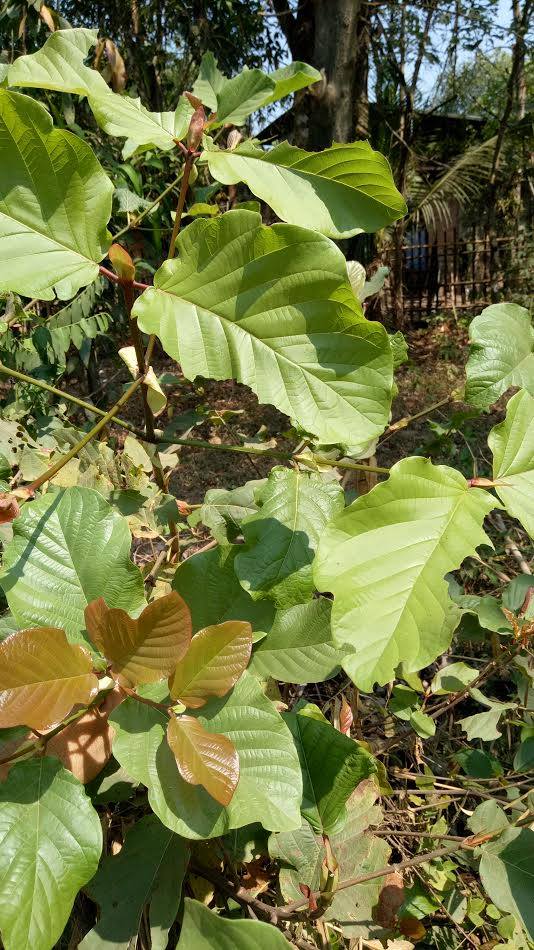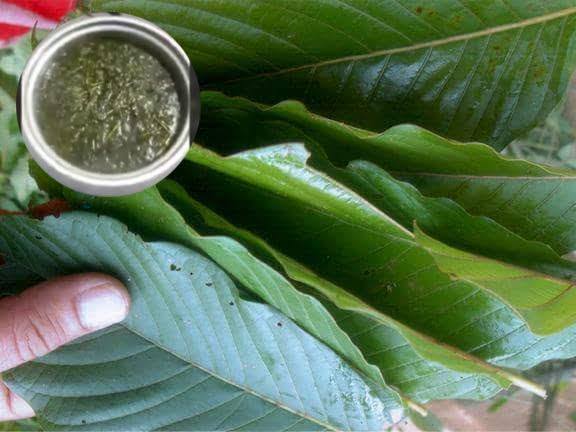Drug use on the rise: Unsupported belief in health benefits of kratom leaf risking Mon youth’s future
September 3, 2019
HURFOM: According to a 2017 report by the Mon Youth Progressive Organization (MYPO), drug use in some ethnic areas, throughout Burma is on the rise. MYPO interviewed 500 people from 10 townships in Mon State. Those interviewed were between 12 to 60 years of age, and had experience with drug use.
The report reveals that the number of drug users has been increasing year after year and drug use has become the norm among some Mon communities. Local groups trying to build anti-drug education programs have noted the spike in drug use is leading to increased violence, crime and poverty.
Drug use particularly methamphetamines is being replaced by users taking Kratom-leaf liquor.
The shift in preference is because the liquor is cheaper than methamphetamine pills and can be drunk in public. According to community groups concerned about increasing drug use and its impacts on Mon youth, some homes are organizing religious events and wedding ceremonies that treat their visitors with drugs and Kratom-leaf liquor instead of offering food and soft drinks. This is making drug use more socially acceptable.

Nai Tin Shein a leading member of a 45-person committee that spearheaded the building of a rehabilitation center for drug addicted youth in Ye Township, told the Irawaddy news outlet in January of this year, that “Projects like this are really the responsibility of the government, but they don’t do it. So we have to help our (young) ethnic people, … they are the future Mon leadership.”
According to the Mon State Police Office, from January to July, 2019, 20 cases of kratom leaves were caught in Mon State.
There is the belief among Mon rural communities that kratom leaves, also known by the names, thang, kakuam, thom, katum, or biak can be used to treat, diarrhea, pain, coughs, and fatigue.
However, the US Drug Enforcement Agency (DEA) has listed kratom as a ‘drug of concern’ due to potential health and safety issues and because it leaves users with a psychotropic and opioid-like pain relieving effects. According to the DEA, in small doses (1-5grams) users experience more alertness, physical energy and are more talkative. Higher doses (5-15grams) act as a sedative to point of losing consciousness. Other effects can include nausea, itching, sweating, dry mouth, constipation, increased urination, and loss of appetite. Long-term use can cause anorexia, weight loss, and insomnia.
Observations offered by Dr Win Kyaw Thu a chief official with the department of psycho-therapeutic treatment and drug rehabilitation at Mawlamyine General Hospital support the DEA’s finding. He said, “(A) little amount of kratom has (an) energetic effect. You feel fresh. But if you use many, kratom leaves (that) brings a narcotic effect. The leaf has two effects. Long term use has a negative impact on both physical and mental health.”
Kratom leaf has a bitter taste and users tend to dilute the liquor with Coca Cola or liquid cough suppressant. Dr Win Kyaw Thu added, this latter combination can lead to serious side effects. “…the combination makes the users feel anxiety, mental disorder and experience mistrust and suspicion of others (suffer from paranoia).”
Min Htaw Kwee, the vice chairperson of the MYPO said, “Parents have accepted (that their children are) using kratom leaves. The parents themselves, dry the leaves and use them in tea. As the parents have accepted kratom leaves, their children shift (from using methamphetamine pills) to drinking kratom-leaf liquor.”
Some people believe the leaf liquor can cure diabetes. “So, they don’t take (other) medicines given by doctors. When drinking the liquor in the long term, their health situation is getting worse” said a Kalogtaw resident.
There is no credible scientific or medical research to support this belief. While there may be some medicinal properties when taken in small doses, a 2019 study of data analyzed from the US National Poison Data system found 11 deaths associated with kratom exposure. Although the majority of these deaths (9) involved exposure to kratom plus other drugs and medicine, two deaths were attributed solely to the exposure to kratom.
Drug users who find the costs and dangers of using methamphetamines pills are swayed by reports of “some villagers (who returned from Thailand) telling local villagers that kratom leaves are used in the production of painkillers (there) so the locals didn’t listen to us,” added Min Htwa Kwee.
Dealing in kratom has other risks. According to Myanmar law, a person in possession of more than 6 kilograms of kratom leaves can be punished with a 10-year prison sentence. For those in possession of less than 6 kilograms, they can face imprisonment sentences of under 10 years, according to a police official.
Kratom leaves can be found in Mawlamyine, Kyaikmayaw, Chaung Zone, Mudon, Thanbyuzayat and Ye Townships of Mon State. According to a local villager, due to ease of availability the number of users increases daily.

“Kratom plants have been planted in (remote) plantations and areas where there is a weak rule of law. The leaves are (harvested) from these areas and sold in the villages. Some leaves have been imported from Thailand,” said a Ye resident.
Comments
Got something to say?
You must be logged in to post a comment.



















































